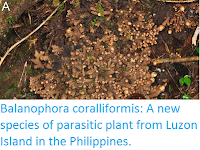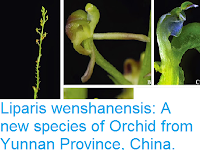The Danjo Islands are a small group of uninhabited islands located about 170 km to the west of Kyushu in the South China Sea. The uninhabited islands have a total surface area of only 4.38 km², but are home to a range of organisms found nowhere else, including a subspecies of Snake, thirteen unique Land Snail species and a species of Orange Day Lily. The islands are designated as a national monument by Japan, and access to them is highly restricted.
In a paper published in the journal Phytotaxa on 9 June 2017, Takuro Ito of the United Graduate School of Agricultural Science at the Tokyo University of Agriculture and Technology, and the Department of Botany at the National Museum of Nature and Science, Hiroko Nakanishi of the Nagasaki Subtropical Botanical Institute, Yoshiro Chichibu and Kiyotaka Minoda of Nagasaki and Goro Kokubugata, also of the United Graduate School of Agricultural Science at the Tokyo University of Agriculture and Technology, and the Department of Botany at the National Museum of Nature and Science, describe a new species of Succulent Plant from the Danjo Islands.
The new species is described from a previously known population, which had been ascribed to the species Sedum formosanum, which is also known from Taiwan and the Philippines. However, the flowers are of Sedum formosanum elsewhere have five petals and ten stamens, while the Danjo Islands population have four petals and eight stamens. A study of the DNA of the Danjo population revealed them to be a distinct species, rather than just a local mutation, and this is species is described as Sedum danjoense, where ‘danjoense’ means ‘from Danjo’.
Sedum danjoense. (A)
Habitat and habit. (B) Inflorescence. (C) Adaxial surface. (D) Abaxial surface.
(E) Flower. (F) Sepals. (G) Carpels. (H) Branching. Scale bars are 25 mm for (A),
5 mm for (B)–(H). Ito et al. (2017).
See also...
Follow Sciency Thoughts on Facebook.







